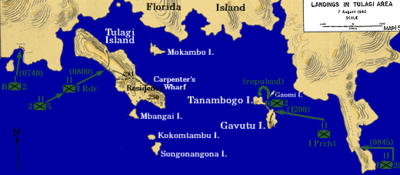
The Guadalcanal campaign, also known as the Battle of Guadalcanal and codenamed Operation Watchtower by American forces, was a military campaign fought between 7 August 1942 and 9 February 1943 on and around the island of Guadalcanal in the Pacific theater of World War II. It was the first major land offensive by Allied forces against the Empire of Japan.

Tulagi, less commonly known as Tulaghi, is a small island in Solomon Islands, just off the south coast of Ngella Sule. The town of the same name on the island was the capital of the British Solomon Islands Protectorate from 1896 to 1942 and is today the capital of the Central Province. The capital of what is now the state of Solomon Islands moved to Honiara, Guadalcanal, after World War II.
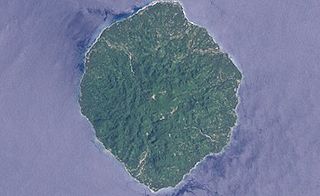
Savo Island is an island in Solomon Islands in the South Pacific ocean. Administratively, Savo Island is a part of the Central Province of Solomon Islands. It is about 35 kilometres (22 mi) from the national capital of Honiara. The principal village is Alialia, in the north of the island.

The Nggela Islands, previously known as the Florida Islands, are a small island group in the Central Province of Solomon Islands, a sovereign state, since 1978, in the southwest Pacific Ocean. The name, Florida Islands, fell into disuse following Solomon Islands' independence in 1978.

The Paramarines was a short-lived specialized combat unit of the United States Marine Corps, trained to be paratroopers dropped from planes by parachute. Marine parachute training which began in New Jersey in October 1940 ended with the parachute units being disbanded at Camp Pendleton, California in February 1944. Paratroopers received a significantly increased salary after completing training, so there was no shortage of volunteers, although all were required to be unmarried. Standards of fitness were high, and 40% failed the training course.

The Solomon Islands campaign was a major campaign of the Pacific War of World War II. The campaign began with Japanese landings and capture of several areas in the British Solomon Islands and Bougainville, in the Territory of New Guinea, during the first six months of 1942. The Japanese occupied these locations and began the construction of several naval and air bases with the goals of protecting the flank of the Japanese offensive in New Guinea, establishing a security barrier for the major Japanese base at Rabaul on New Britain, and providing bases for interdicting supply lines between the Allied powers of the United States and Australia and New Zealand.

The British Solomon Islands Protectorate was first established in June 1893, when Captain Herbert Gibson of HMS Curacoa declared the southern Solomon Islands a British protectorate.

Henderson Field is a former military airfield on Guadalcanal, Solomon Islands, during World War II. Originally built by the Japanese Empire, the conflict over its possession was one of the great battles of the Pacific War. Today it is Honiara International Airport.

The 2nd Marine Regiment is an infantry regiment of the United States Marine Corps. They are based at Marine Corps Base Camp Lejeune, North Carolina and fall under the command of the 2nd Marine Division and the II Marine Expeditionary Force.
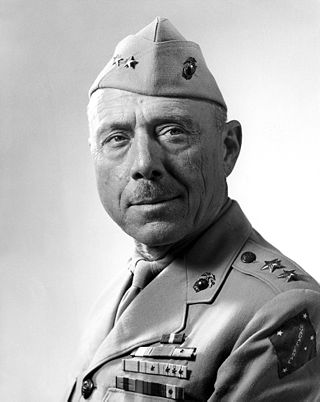
William Henry Rupertus was a major general in the United States Marine Corps, who commanded the famed 1st Marine Division in the Pacific in World War II and also authored the USMC Rifleman's Creed.

Santa Isabel is the largest island in Isabel Province, Solomon Islands. It is also the longest island, with the third largest surface area, in the country.
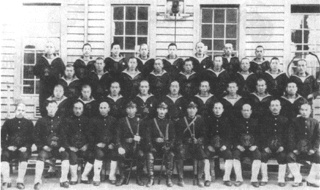
The invasion of Tulagi, on 3–4 May 1942, was part of Operation Mo, the Empire of Japan's strategy in the South Pacific and South West Pacific Area in 1942. The plan called for Imperial Japanese Navy troops to capture Tulagi and nearby islands in the British Solomon Islands Protectorate. The occupation of Tulagi by the Japanese was intended to cover the flank of and provide reconnaissance support for Japanese forces that were advancing on Port Moresby in New Guinea, provide greater defensive depth for the major Japanese base at Rabaul, and serve as a base for Japanese forces to threaten and interdict the supply and communication routes between the United States and Australia and New Zealand.

Choiseul Island, native name Lauru, is the largest island of the Choiseul Province, Solomon Islands, at 7.08°S 157°E. The administrative headquarters of Choiseul Province is situated in the town of Taro, on Taro Island.
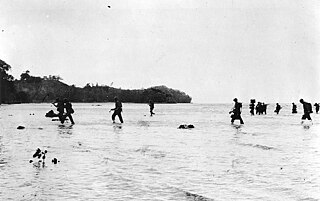
The Battle of Tulagi and Gavutu–Tanambogo was a land battle of the Pacific campaign of World War II, between the forces of the Imperial Japanese Navy and Allied ground forces. It took place 7–9 August 1942 on the Solomon Islands, during the initial Allied landings in the Guadalcanal campaign.

USS Jamestown (PG-55) was a patrol gunboat and after 13 January 1943 a Jamestown-class motor torpedo boat tender acquired by the U.S. Navy during World War II. Her task in her final classification was to provide a "home base" for torpedo boats in remote parts of the ocean during the war, and to provide them with necessary services, such as fuel, food, and repairs.
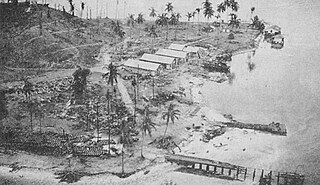
Tanambogo is a small island in the Central Province of Solomon Islands in the Nggela Islands group, which was also known as the Florida Islands under the British Solomon Islands Protectorate and during World War 2.

The Yokohama Air Group was an aircraft and airbase garrison unit of the Imperial Japanese Navy Air Service during the Pacific campaign of World War II.
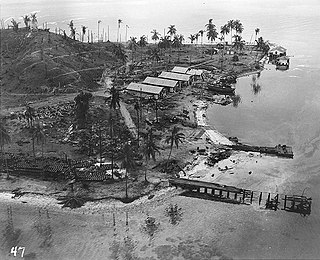
RAAF Tanambogo was a Royal Australian Air Force seaplane advanced operating base on the islands of Tanambogo, Gaomi and Gavutu, British Solomon Islands, constructed in 1939. Tanambogo and Gavutu were connected by causeway.
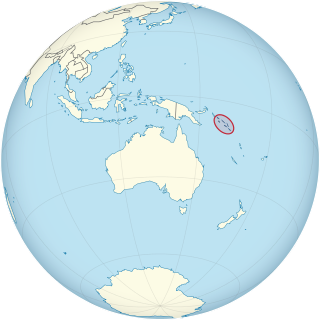
US Naval Base Solomons was a number of United States Navy bases in the Solomon Islands in the Pacific Ocean. Most were built by the US Navy Seabees, Naval Construction Battalions, during World War II as part of the Pacific War. In August 1942 the United States Armed Forces took the Guadalcanal in the Solomon, in the Battle of Guadalcanal. US Navy Seabees built a new base at Guadalcanal, Naval Base Guadalcanal and then on other islands in the Solomons.

